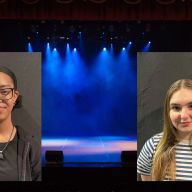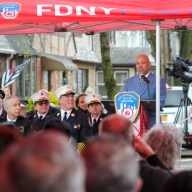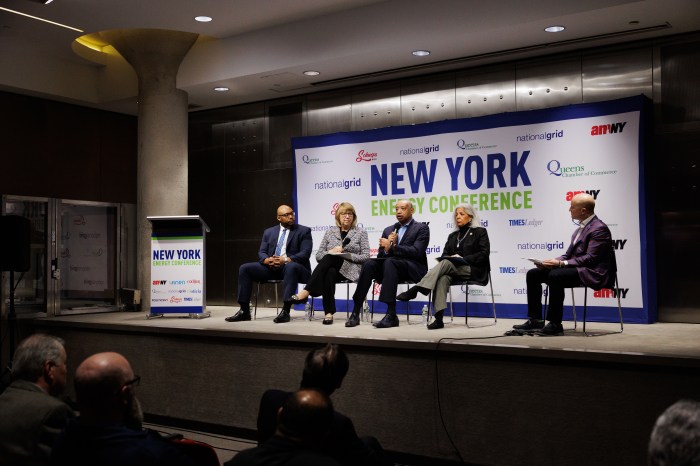By Joe Anuta
The Queens Museum of Art wanted to make sure everyone on a recent gallery crawl knew which borough they were in.
The event was called “Vere, Ridgewood Est,” which translates from Latin to “Actually, it’s Ridgewood.”
Many of the galleries along the neighborhood walking tour might have been mistaken for venues in Brooklyn.
“That’s why we called it that,” said Tom Finkelpearl, executive director of the museum.
To highlight the burgeoning art scene in western Queens, the museum partnered with several galleries in the area to provide an overview of some of the venues.
The tour kicked off with hotdogs and beer at the historic Vander-Ende Onderdonk House, which sits near a border that once caused violent disputes between the largely Dutch population in Brooklyn and the predominately British population in what is now Queens.
The artists hanging out at some of the six stops along the walking tour seemed more intent on bringing the borough together.
At the enormous industrial building, at 17-17 Troutman St., which Finkelpearl touted as the epicenter of the growing art community, one gallery was called “Regina Rex,” which boasts the Latin words for “queen” and “king,” symbolizing a unity between the boroughs.
Inside, four large paintings were on display and the artists who created them were on hand to discuss their work.
Later, participants filtered over to the Bushwick Print Shop in the same building to get the event’s logo printed onto shirts and bags by artist Ray Cross before heading up to a roof deck for a beer and to admire the skyline view of Manhattan.
Groups of gallery-goers then wandered through the row houses and corner stores of the neighborhood, noses buried in a map of the six-stop route. One of those stops was a DIY gallery called Small Black Door run by Matthew Mahler and Jonathan Terranova out of the basement of a house.
The growing presence of artists in Queens is mostly a matter of real estate, according to Mahler.
“It’s a direct extension from the spillover from Bushwick,” he said, referring to the Brooklyn neighborhood across the border.
Finkelpearl said the neighborhood, made up of homeowners rather than renters who might be pushed out by waves of gentrification, has largely welcomed the new crowd.
But not everyone owns a home, according to one gallery owner along the way who was concerned about the influx.
“The rent is going to go up,” said Fred Valentine, who nevertheless said the crawl was a success and had his small gallery packed with curious patrons all day.
The last stop of the day was Gotscheer Hall, a bar where a Ridgewood artist collective hosted a series of events.
After a public forum about the connection between artists spaces and the community hosted by members of Silent Barn, a music and artist venue that operated in the neighborhood for years before thieves ransacked their space and the city subsequently kicked them out due to building violations, the gallery crawlers were treated to an evening of drinks, prizes and music to cap the museum’s first foray into the Queens neighborhood.
Reach reporter Joe Anuta by e-mail at januta@cnglocal.com or by phone at 718-260-4566.






























